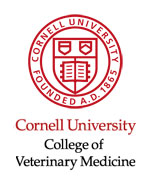"Foot and Mouth Disease Management and Land-Use
Implications in the Zimbabwean Lowveld: the Rationale for
Creating a Biosphere Reserve"
Raoul du Toit
The Lowveld region of Zimbabwe is the semi-arid southeastern
sector of the country, in which mean annual rainfall is 300-600
mm per annum. This region, being about 200,000 km2, comprises
20% of Zimbabwe. It includes state land (notably the Gonarezhou
National Park), Communal Lands (subsistence production) and
commercial ranching areas that until recent political unrest
in Zimbabwe were converting rapidly into wildlife production
as the primary land-use in place of cattle ranching. These
commercial ranching areas contain approximately 260 black
rhinos, which constitute about half of Zimbabwe's total black
rhino population. In addition, the Lowveld contains significant
populations of wild dog, elephants, cheetah, white rhino,
etc. The initiation of the Great Limpopo Transfrontier Area
can and should lead to the inclusion of wildlife producing
areas of the Lowveld within a massive regional wildlife complex.
Although land-use patterns in the Lowveld have recently been
disrupted by land invasions and by associated problems during
a period of economic and political instability, the future
of the area clearly lies in the comparative ecological and
economic advantage that has been demonstrated in wildlife-based
land-uses, regardless of who owns the land. There is an urgent
need now to initiative planning and dialogue between stakeholders
in order to maximize the wildlife potential of the Lowveld,
as Zimbabwe emerges from current instability. This may best
be achieved through the initiation of a Lowveld Biosphere
Programme, for which international funding and technical
support must be secured. This programme would have to be
strongly linked to the re-establishment of control measures
for Foot-and-Mouth Disease, which must become a priority
for future development assistance to Zimbabwe owing to the
impacts of this disease not only on Zimbabwe's beef industry
but also on the economies of adjacent countries (South Africa
and Botswana).
|
|











